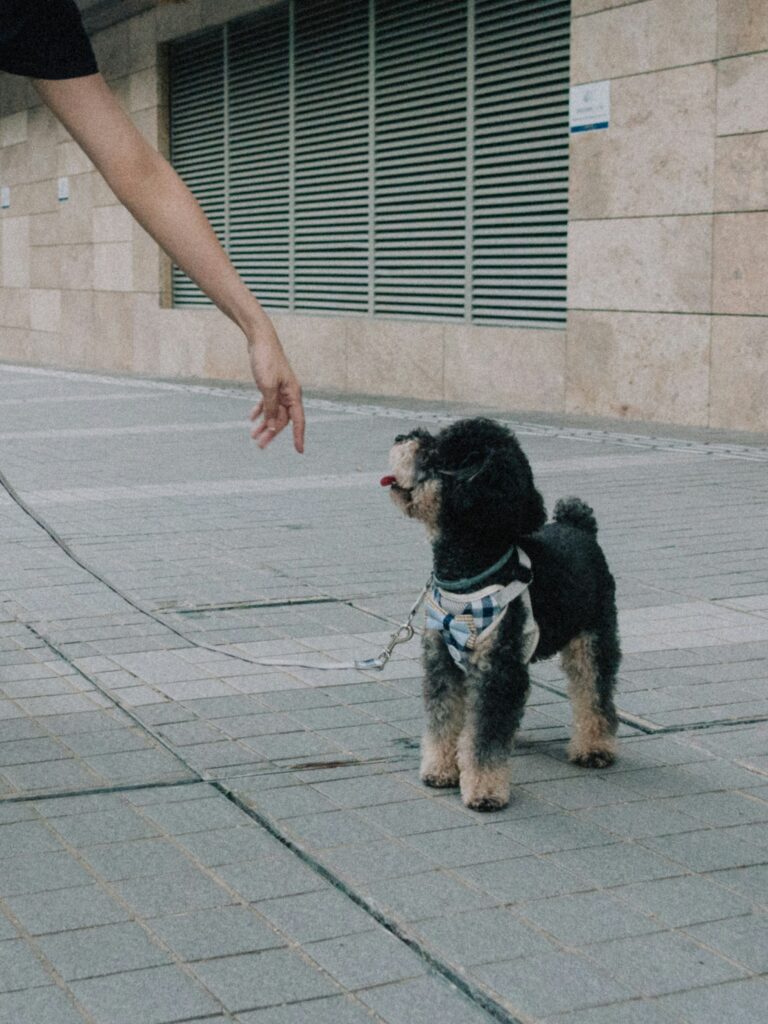Understanding Canine Body Language
Dogs may not speak our language, but they communicate with us all the time. From the wag of a tail to the flick of an ear, your dog’s body language reveals what they’re thinking and feeling. Learning how to read these subtle cues can drastically improve your relationship and help prevent misunderstandings or behavior issues.
Let’s explore the most common signs of canine body language—and what your dog may be trying to tell you.
1. Tail Talk: More Than Just Wagging
Many people think a wagging tail means a happy dog—but that’s not always the case.
-
Loose, low wag: A relaxed, friendly dog.
-
High, stiff wag: Alert or dominant; may signal tension.
-
Tucked tail: Fear, submission, or anxiety.
-
Tail held straight out: The dog is focused or unsure.
-
Fast, high wag with stiff body: Could be arousal or even agitation.
Always look at the entire body, not just the tail.
2. Ears: Tuned Into Emotion
Ears are one of the clearest indicators of your dog’s mood—especially if they’re naturally upright or expressive.
-
Ears forward and alert: Interest or excitement.
-
Ears pinned back: Anxiety, fear, or appeasement.
-
Ears relaxed to the side: Calm and content.
Keep in mind breed differences. A Basset Hound’s “droopy” ears won’t express the same as a German Shepherd’s upright ears.
3. Eyes: Windows to Their Mood
Dogs use eye contact in specific ways:
-
Soft eyes/blinking: Relaxed and calm.
-
Wide eyes with visible whites (whale eye): Stress, fear, or discomfort.
-
Hard stare: Tension, challenge, or warning.
-
Avoiding eye contact: Submission or uncertainty.
Staring directly into your dog’s eyes too long can feel threatening to them, especially if they’re nervous.
4. Mouth & Facial Expressions
Like humans, a dog’s mouth can say a lot.
-
Relaxed, open mouth: Comfortable and happy.
-
Tight, closed mouth: Tension or uncertainty.
-
Panting (not due to heat): Possible stress.
-
Lip licking/yawning (outside of sleep): Calming signals or nervousness.
-
Showing teeth: Can be a warning—context matters.
A “smile” might be a submissive grin or a precursor to growling—watch the rest of the body.
5. Posture & Movement
A dog’s body position is one of the clearest ways to assess mood.
-
Loose, wiggly body: Happy and friendly.
-
Stiff, upright body: Alert, tense, or possibly aggressive.
-
Cowering/low body: Fear, anxiety, or submission.
-
Play bow (front down, rear up): Invitation to play.
-
Freezing: Warning sign. The dog is trying not to react—yet.
If your dog suddenly “freezes,” especially around new people or animals, back off and give them space.
6. Vocalizations & Paired Behavior
Barking, whining, or growling are often paired with body language to add meaning.
-
Playful barking: Often high-pitched with bouncing posture.
-
Whining: Seeking attention or expressing discomfort.
-
Growling: A warning. Don’t punish it—respect it.
-
Howling: Communication with other dogs or reaction to sound.
-
Silent dog with tension: May feel unsafe or close to lashing out.
Don’t just listen—watch your dog’s body to understand what the sound means.
7. Calming Signals: How Dogs De-escalate
Dogs often display calming behaviors to diffuse tension or let others know they’re not a threat. These include:
-
Turning the head away
-
Licking lips
-
Yawning
-
Sniffing the ground
-
Walking in an arc
-
Blinking or squinting
If you notice these signs, especially during a stressful interaction, it’s a good idea to give your dog space or remove them from the situation.
8. Misinterpreting “Friendly” Signals
Some body language can be misread:
-
Jumping up: Often excitement, but can signal insecurity.
-
Rolling over: Could mean playfulness or submission—not always an invite for belly rubs.
-
Wagging tail with stiff body: Not friendly—this dog is on alert.
-
Licking a person: May show affection—or could be anxiety.
Again, the full context matters. A wagging tail doesn’t always mean “happy.”
9. Situational Awareness: Context is Key
Always consider:
-
Environment: Is your dog reacting to something new or unexpected?
-
Past experiences: Has your dog had a negative interaction that might shape their response?
-
Body language as a whole: Never rely on one signal alone.
Even a generally relaxed dog can become overwhelmed or reactive under stress. Knowing what their subtle cues look like can help you catch problems before they escalate.
10. Strengthening Your Bond Through Understanding
Learning your dog’s body language has huge benefits:
-
Improved training: You’ll know when they’re confused, distracted, or ready to learn.
-
Deeper connection: You’ll respond to their needs faster, building trust.
-
Safer socialization: You can step in before conflicts arise at the dog park or with new people.
-
Early intervention: Spot illness or emotional distress before it becomes serious.
When your dog knows you “get them,” it leads to a more secure, confident, and happy pup.
Final Thoughts
Understanding canine body language is like learning another language—but one your dog has been speaking their entire life. With observation and practice, you’ll become fluent in your dog’s unique expressions and responses.
The result? A deeper relationship, better behavior, and a happier life together.



